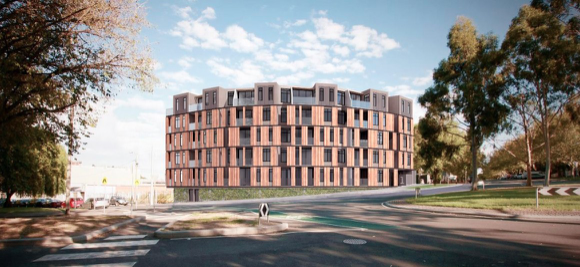Trial housing project creates pathway to homeownership and frees up social housing

A trial housing development on a 34-unit apartment block in North Melbourne has helped people come off social housing waiting lists, thanks to a unique partnership between University of Melbourne, Melbourne City Mission, Resilient Melbourne and the City of Melbourne.
The Barnett Model (formerly Melbourne Apartments Project or MAP) Final Report released today demonstrates the model’s effectiveness in helping social housing tenants become home owners in cases where they may have been priced out of the market.
The model relies on a deferred second mortgage that allows homeowners to pay approximately 63 per cent of the apartment’s market value upfront. The remaining value is covered by a no-interest, no-fee loan (or ‘Barnett Advance’) that reduces over time and isn’t payable until the homeowner sells their apartment.
University of Melbourne researchers identified how the model responds to two key barriers to home ownership: high deposit requirements and capacity to qualify for and make repayments to service a large mortgage.
Faculty of Architecture, Building and Planning researcher and lead author of the report Dr Katrina Raynor said: “Our research shows that most of the residents who bought into the Melbourne Apartment Project had been long-term social housing tenants. They had been dreaming of homeownership for a long time but had never had the capacity to buy a home until now.
“We are pleased to see these developments are scalable and will provide a proactive solution for more people in need of an attainable home ownership option."
Sorayia, 28, said: “For the first time we feel safe and happy knowing this is our own space. We’ve lived in public housing for 21 years and know now that this is our forever home. I hope more people get the same opportunity. We feel very lucky.”
Melbourne City Mission Chief Executive Officer Vicki Sutton said: “The report demonstrates this innovative and realistic initiative can provide a successful pathway into homeownership for social housing residents. This opportunity also frees up social housing for many people languishing on social housing wait lists.”
The report examines current housing policy and identifies recurring rhetoric that encourages homeownership, while analysing the cost-benefit of secure housing. It also looked at the lived experiences of residents in the North Melbourne development.
Resilient Melbourne Chief Resilience Officer Toby Kent said: “We’re proud to be associated with this project that has put home ownership within reach of more social housing tenants and with Dr Raynor’s research really underpinning the value of the model, we look forward to The Barnett Model being scaled and replicated.”
Chair of the City of Melbourne’s People City portfolio Beverley Pinder said: “This is a great example of what non-traditional partnerships can achieve, when a number of organisations come together to deliver much needed accessible housing stock.
“People waiting for social or public housing are usually more vulnerable to homelessness. This initiative is a step in the right direction as it’s freeing up more space on both the public and social housing system.”
Plans are already underway for crisis accommodation in Frankston and another Barnett Model development in Brunswick to extend the shared equity home ownership model developed as part of the original Melbourne Apartments Project.
For further detail, the Barnett Model Final Report is available for download: go.unimelb.edu.au/udc6